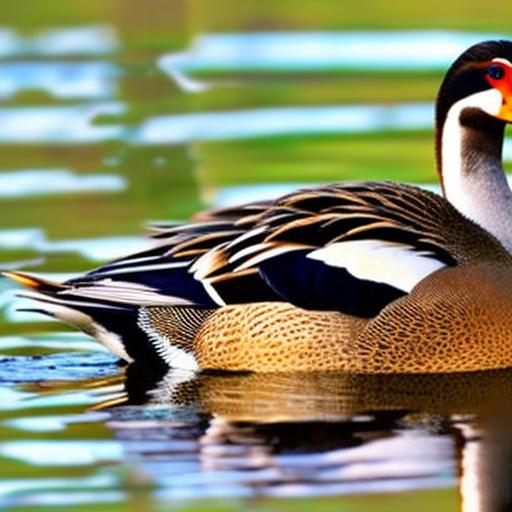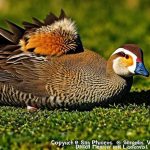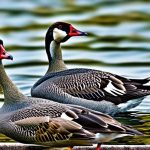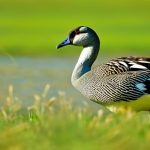Ducks and geese are two of the most common types of waterfowl, and they come in a wide variety of breeds, each with its own unique characteristics and behaviors. These birds have been domesticated for thousands of years and have played important roles in agriculture, conservation, and even cultural symbolism. Understanding the different breeds of ducks and geese is essential for anyone interested in raising these birds, whether for farming purposes or simply as pets. In this article, we will explore the history, characteristics, and significance of various duck and goose breeds, as well as their role in agriculture and conservation.
The History and Evolution of Duck and Goose Breeds
The domestication of ducks and geese dates back to ancient times, with evidence of their presence in various cultures around the world. Ducks and geese were originally kept for their meat, eggs, and feathers, and they were also used for pest control in rice paddies and other agricultural settings. Over time, different breeds of ducks and geese were developed through selective breeding, resulting in a wide range of sizes, colors, and behaviors. Today, there are hundreds of different duck and goose breeds, each with its own unique traits and characteristics. Understanding the history and evolution of these breeds can provide valuable insight into their role in human society and the natural world.
Understanding the Different Characteristics and Behaviors of Duck and Goose Breeds
Ducks and geese come in a wide variety of breeds, each with its own unique characteristics and behaviors. Some breeds are known for their excellent egg-laying abilities, while others are prized for their meat or feathers. Additionally, different breeds of ducks and geese have varying temperaments, with some being more docile and friendly, while others are more independent and aloof. Understanding the different characteristics and behaviors of duck and goose breeds is essential for anyone considering raising these birds, as it can help determine which breeds are best suited to their specific needs and preferences. In the following sections, we will explore some of the most popular and lesser-known duck and goose breeds, as well as their roles in agriculture and conservation.
Exploring Popular Duck Breeds: Mallards, Pekins, and Khaki Campbells
Mallards, Pekins, and Khaki Campbells are among the most popular and well-known duck breeds, each with its own unique characteristics and traits. Mallards are perhaps the most iconic of all duck breeds, known for their distinctive green heads and colorful plumage. They are also highly adaptable and can be found in a wide range of habitats, from urban ponds to remote wetlands. Pekin ducks, on the other hand, are prized for their excellent meat and egg-laying abilities, making them a popular choice for small-scale farmers and homesteaders. Khaki Campbells are another popular duck breed, known for their excellent egg-laying abilities and friendly, sociable nature. Understanding the characteristics and behaviors of these popular duck breeds can provide valuable insight into their role in agriculture and conservation.
Uncovering Lesser-Known Duck Breeds: Runner Ducks, Cayugas, and Indian Runners
While Mallards, Pekins, and Khaki Campbells are among the most popular duck breeds, there are also many lesser-known breeds that are equally fascinating and unique. Runner ducks, for example, are known for their upright posture and distinctive running gait, making them a popular choice for small-scale farmers and backyard enthusiasts. Cayuga ducks are another lesser-known breed, prized for their iridescent green-black plumage and excellent meat and egg-laying abilities. Indian Runners are yet another unique duck breed, known for their tall, slender build and excellent egg-laying abilities. Understanding the characteristics and behaviors of these lesser-known duck breeds can provide valuable insight into the diversity and versatility of ducks as a species.
The Diversity of Goose Breeds: Toulouse, Embden, and Chinese Geese
In addition to ducks, there are also a wide variety of goose breeds, each with its own unique characteristics and traits. Toulouse geese are among the most popular and well-known goose breeds, prized for their large size, excellent meat, and egg-laying abilities, and calm, friendly nature. Embden geese are another popular breed, known for their pure white plumage and excellent meat and egg-laying abilities. Chinese geese are yet another unique goose breed, known for their distinctive knobbed beaks and upright posture, as well as their excellent egg-laying abilities. Understanding the diversity of goose breeds can provide valuable insight into their role in agriculture and conservation, as well as their cultural and symbolic significance.
The Role of Duck and Goose Breeds in Agriculture and Conservation
Duck and goose breeds have played important roles in agriculture and conservation for thousands of years. In addition to providing meat, eggs, and feathers, these birds also play a crucial role in pest control, particularly in rice paddies and other agricultural settings. Additionally, ducks and geese are also important for their role in wetland conservation, as they help maintain the health and balance of these vital ecosystems. Understanding the role of duck and goose breeds in agriculture and conservation is essential for anyone interested in raising these birds, as it can help promote sustainable practices and conservation efforts.
Breeding and Raising Duck and Goose Breeds: Tips and Considerations
Breeding and raising duck and goose breeds can be a rewarding and fulfilling experience, but it also requires careful planning and consideration. It is important to choose the right breeds for your specific needs and preferences, as well as to provide appropriate housing, nutrition, and care. Additionally, it is also important to consider the ethical and environmental implications of breeding and raising ducks and geese, particularly in terms of conservation and sustainability. Understanding the tips and considerations for breeding and raising duck and goose breeds can help ensure the health and well-being of these birds, as well as promote responsible and ethical practices.
The Cultural and Symbolic Significance of Duck and Goose Breeds
Duck and goose breeds have also played important roles in various cultures and societies around the world, often serving as symbols of fertility, abundance, and good fortune. In many cultures, ducks and geese are also associated with various myths, legends, and folklore, often representing love, loyalty, and perseverance. Understanding the cultural and symbolic significance of duck and goose breeds can provide valuable insight into the deep and enduring connection between humans and these birds, as well as their role in shaping our collective consciousness and identity.
The Future of Duck and Goose Breeds: Conservation Efforts and Sustainable Practices
As the world continues to grapple with environmental challenges and the loss of biodiversity, the future of duck and goose breeds is more important than ever. Conservation efforts and sustainable practices are essential for preserving the diversity and vitality of these birds, as well as their role in agriculture and conservation. It is important to promote responsible and ethical breeding and raising practices, as well as to support conservation efforts and initiatives aimed at protecting and preserving duck and goose breeds for future generations. Understanding the future of duck and goose breeds can help promote awareness and action, as well as inspire a deeper appreciation for these fascinating and important birds.
Meet Walter, the feathered-friend fanatic of Florida! Nestled in the sunshine state, Walter struts through life with his feathered companions, clucking his way to happiness. With a coop that’s fancier than a five-star hotel, he’s the Don Juan of the chicken world. When he’s not teaching his hens to do the cha-cha, you’ll find him in a heated debate with his prized rooster, Sir Clucks-a-Lot. Walter’s poultry passion is no yolk; he’s the sunny-side-up guy you never knew you needed in your flock of friends!







